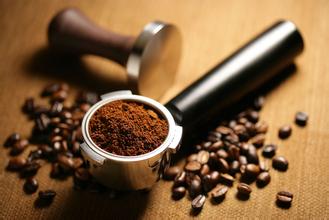Introduction to the blending of Italian Coffee with different roasting degrees
The extraction method, such as hand-brewed coffee, which emphasizes the flavor of origin, usually uses medium-to-deep roasting for coffee beans, but for Espresso, non-re-roasting is not enough to reflect the perfection of Espresso taste. The baking degree of most Espresso beans is in the re-baking stage after the peak of the second explosion.
On the one hand, this baking degree is due to the extraction principle of Espresso. The extraction of Espresso is completed in 25 to 30 seconds. In order to completely extract the essence of coffee in such a short time, the caramelization reaction must be carried out more fully from the beginning of baking, the formation of coffee aromatic oil is more thorough, and the coffee aromatic oil can reach the surface of coffee cells as much as possible by means of re-baking. In order to achieve the acquisition of essence in the limited extraction time.
On the other hand, this kind of baking is also related to the birthplace of Espresso. Espresso is a coffee extraction method that originated in Italy. At the end of the 19th century and the beginning of the 20th century, that is, when the Espresso extraction method was born, Italy was not a rich country in Europe. Due to its own economic strength, the popular coffee in Italy was not of high quality, and most of them drank inferior robusta coffee. Robusta coffee contains unpleasant earthy taste and strong astringent taste. in order to cover up this bad taste, the coffee roaster chose the re-baking method to cover up the bad flavor of the coffee at the cost of losing part of the coffee flavor. This tradition continues to this day, and many people insist that authentic espresso should be served with robusta coffee. Even big brands of espresso beans like Lavazza make no secret of their love of robusta coffee, just like ILLY has begun to avoid the experience of using robusta beans in its blending in recent years. Especially at the moment of the rise of the concept of boutique coffee, as a coffee specialty store, or adhere to the quality of boutique coffee as a perfect cup of Espresso is affected by many factors, first talk about blending and baking.
Match:
A perfect Espresso starts with a mix. The perfect Espresso requires sweetness, and the overall taste will be balanced, with a perfect balance of bitterness, acidity, sweetness and finish. This is a task that can not be accomplished by a single coffee bean, so in order to get a perfect Espresso, we must first have a perfect coffee bean matching scheme, which refers not only to the collocation of coffee beans from different places, but also to the coordination between the different roasting degrees of the same kind of coffee beans, whether it is the collocation of coffee beans from different places or the different roasting degrees of coffee beans from the same place. There is only one principle of blending to achieve the final balance of Espresso coffee taste.

Important Notice :
前街咖啡 FrontStreet Coffee has moved to new addredd:
FrontStreet Coffee Address: 315,Donghua East Road,GuangZhou
Tel:020 38364473
- Prev

Introduction of boutique coffee beans in the western valley of Tarasu, Costa Rica
Tarasu, Costa Rica, arrazu) is one of the major coffee producing areas in the world, with a light and pure flavor and pleasant aroma. Costa Rica, with its fertile volcanic soil and good drainage, is the first country in Central America to grow coffee and bananas for commercial value. Coffee and bananas are the country's main exports. Extra hard beans are excellent.
- Next

Introduction of Dominican Coffee Manor with a faint fragrance
In the early 18th century, coffee was introduced to Domiga from Martinique, and fine coffee was produced in the north represented by Hibao and in the south, including Okayabani Santo Domingo. Among them, the coffee produced by Santo Domingo and Barney, which is almost synonymous with domiga coffee, is a world-famous high-quality coffee. Santo Domingo coffee, which is characterized by freshness and elegance,
Related
- Detailed explanation of Jadeite planting Land in Panamanian Jadeite Manor introduction to the grading system of Jadeite competitive bidding, Red bid, Green bid and Rose Summer
- Story of Coffee planting in Brenka region of Costa Rica Stonehenge Manor anaerobic heavy honey treatment of flavor mouth
- What's on the barrel of Blue Mountain Coffee beans?
- Can American coffee also pull flowers? How to use hot American style to pull out a good-looking pattern?
- Can you make a cold extract with coffee beans? What is the right proportion for cold-extracted coffee formula?
- Indonesian PWN Gold Mandrine Coffee Origin Features Flavor How to Chong? Mandolin coffee is American.
- A brief introduction to the flavor characteristics of Brazilian yellow bourbon coffee beans
- What is the effect of different water quality on the flavor of cold-extracted coffee? What kind of water is best for brewing coffee?
- Why do you think of Rose Summer whenever you mention Panamanian coffee?
- Introduction to the characteristics of authentic blue mountain coffee bean producing areas? What is the CIB Coffee Authority in Jamaica?

